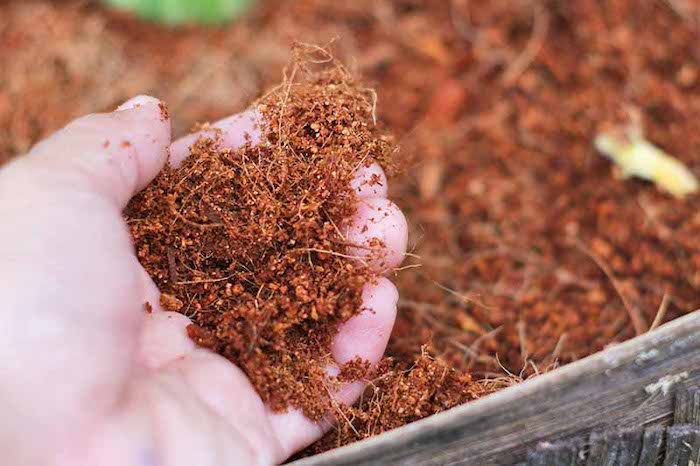GardenAdvice non peat compost developments

Coconut-coir-compost
Cocopeat is a by-product of coco husk. Cocopeat are the small particles left behind once the coco fibres have been separated.
The largest producers / exporters of Coconuts:
- Indonesia
- Philippines
- India
- Sri Lanka
- Brazil
- Vietnam
- Papua New Guinea
- Mexico
- Thailand
- Myanmar
France is the biggest exporter of coconut in Europe
Which counties out of the 10 would you like me to investigate? Maybe 3?
How cocopeat it’s made:
- Preferably freshwater coconuts are used to avoid salt.
- Coconut husk is soaked in water for 3 months (although there are mentions of 6 – 12months).
- The husks are then pushed through a press to squeeze out the water
- The fibres are pulled apart – these fibres are used to create many things within textiles
- The small particles left behind is the cocopeat
- The cocopeat is then sieved to remove any more fibres
- Cocopeat is pressed into blocks
- Then it is left in the sun to dry (not dried with machinery because this can cause damage and affect the quality).
Additional Information
10 Benefits of Coco:
- Promotes strong root growth and plant vigour.
- Coco coir is completely environmentally friendly.
- Encourages beneficial bacteria and discourages harmful bacteria.
- It is a 100% renewable resource
- Coco has an ideal pH range of 6.0-6.8.
- Coco coir never shrinks, cracks or produces crust
- High lignin and cellulose content
- Coco coir is odourless, pleasant to handle, and uniform in composition.
- Coir has a high cation exchange, meaning it can store unused minerals to be released to the plant as and when it requires it.
- Contains significant amounts of phosphorous (10-50ppm) and potassium (150-450 ppm).
Mycorrhizae are beneficial fungi that colonise the root surface, helping the plant take up nutrients. The use of reverse osmosis water is beneficial when using this fungus. But that also means the useful nutrients taken out need to be added back in.
Interesting description for growing media:
The growing media should have various favourable characters such as light-weight. good porosity, well-drained but with optimum water holding capacity, slightly acidic with optimum cation-exchange-capacity, constant volume when wet or dry, lack of insects, diseases and weed seeds, low content of silt, clay and ash, easy storage for long periods of time without changes in physical and chemical properties and easy handling and blending.
Some scientific papers on the effect different sized particles have on plant growth and moisture retention:
EFFECT OF COCO PEAT PARTICLE SIZE FOR THE OPTIMUM GROWTH OF NURSERY PLANT OF GREENHOUSE VEGETABLES – https://www.researchgate.net/profile/Siripala-Subasinghe/publication/309657457_Effect_of_coco_peat_particle_size_for_the_optimum_growth_of_nursery_plant_of_greenhouse_vegetables/links/6163b891e7993f536cbe2b6f/Effect-of-coco-peat-particle-size-for-the-optimum-growth-of-nursery-plant-of-greenhouse-vegetables.pdf Quantitative NIR spectroscopy determination of coco-peat substrate moisture content: Effect of particle size and non-uniformity –https://reader.elsevier.com/reader/sd/pii/S1350449520305302?token=5B57A04858923E9F10EF95B6B2D68043781D496B8FC9B581FF2DFF6CDECFD87284872B90A0EEB688F0969F9FFC30F0FD&originRegion=eu-west-1&originCreation=20220308102208